The post Big Data In Football! appeared first on Science for Sport.
]]>- The big data arms race in football
- Eamonn Flanagan’s male and female RSI thresholds
- Are 1RM predictive equations accurate?
The big data arms race in football

A YouTube video produced by the Financial Times focusing on the escalating competition related to big data in football has drawn significant attention in recent weeks. This video offers valuable insights into the pivotal role that data now plays across various tiers of football, from grassroots to professional levels.
The video commences by providing an insider’s view of AI.IO, an Artificial Intelligence sports science company, which employs data to assist football clubs in player recruitment. The company meticulously gathers and evaluates data concerning football skills and athletic abilities, providing football teams with objective information to aid in player scouting. Paul Jenkins, Director of Football Development at Burnley F.C., emphasises the immense value of objective data. However, he believes that it should serve as an aid to, rather than a replacement for, traditional football scouting methods.
Jenkins further explains how Burnley F.C.’s youth academy uses data from AI.IO to enhance player development. Individual player assessments and data analysis conducted by AI.IO are used to create tailored player development plans based on the gathered data, with the goal of improving long-term player development.
The video then delves into the growing significance of big data in the football transfer market. With football clubs facing stricter financial constraints, the efficacy of player transfers is under heightened scrutiny. Ian Graham, former Director of Research at Liverpool F.C. during their 2021 Premier League triumph, underscores the instrumental role played by big data in their successful season. Graham chats about the player benchmarking and data tracking methodologies he utilised at Liverpool to facilitate more informed transfer decisions.
If you are interested in how increasingly important data is becoming in football, this video is definitely worth checking out. Here at Science for Sport, we are fully aware of just how important data analytics is becoming. In response, we are going to be launching our Certified Sports Data Analyst certification! Click here to join the waitlist.
Eamonn Flanagan’s male and female RSI thresholds
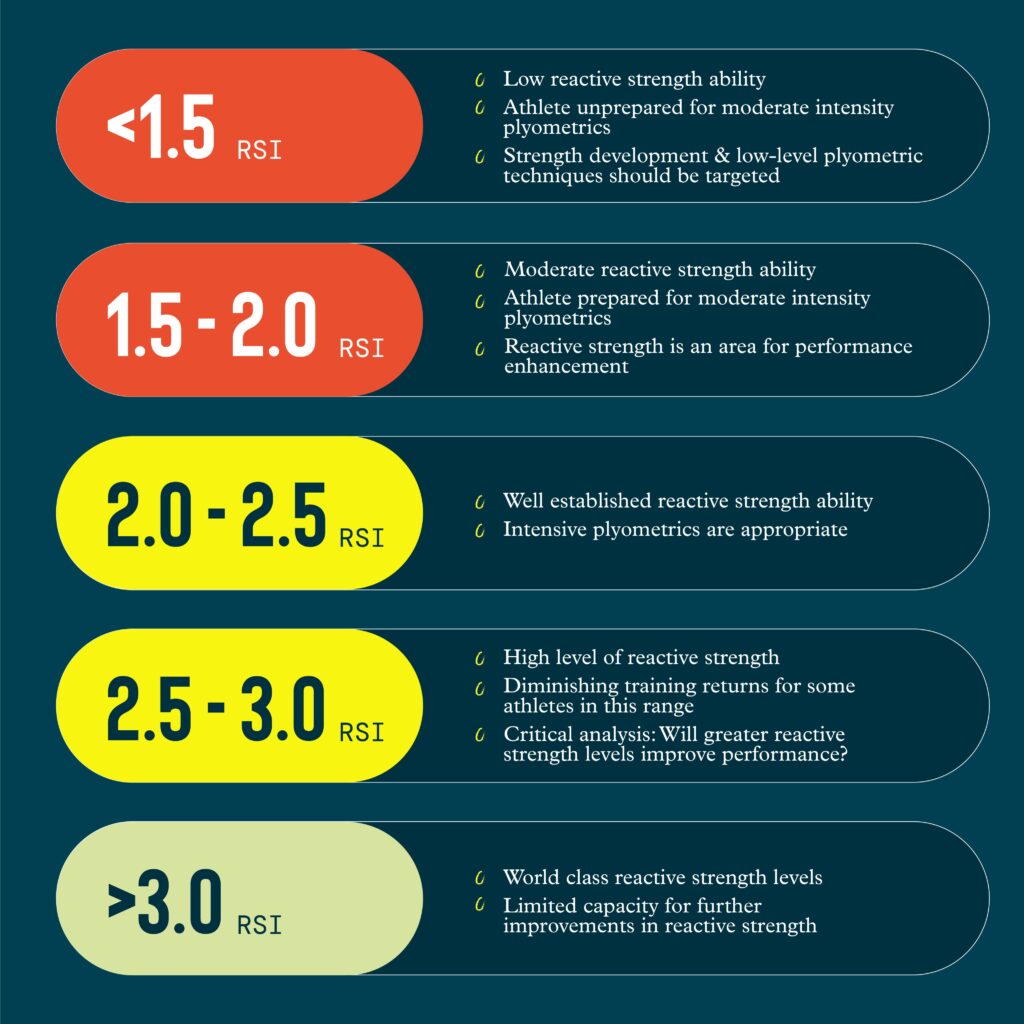
Eamonn Flanagan, a renowned Irish strength and conditioning coach and sport scientist, has been a regular feature on SFS Weekly. His recent posts on the Reactive Strength Index (RSI) on X have attracted substantial attention, amassing over 80,000 views within a week!
RSI is calculated by dividing jump height by contact time. It helps assess an athlete’s ability to use the stretch-shortening cycle. Flanagan has created gender-specific charts that outline RSI performance thresholds. The female chart has five thresholds ranging from <1.3 RSI to >2.3 RSI, while the male chart has thresholds ranging from <1.5 RSI to >3.0 RSI.
After obtaining an RSI score, comparing it with Flanagan’s chart thresholds can help evaluate an athlete’s reactive strength ability. This can guide the determination of suitable plyometric exercise intensities. These charts are essential tools for optimising an athlete’s RSI.
We recommend checking out Flanagan’s posts for males [here] and females [here]. You can also learn more about RSI in our introduction video [here] and use our FREE RSI calculator [here].
Are 1RM predictive equations accurate?
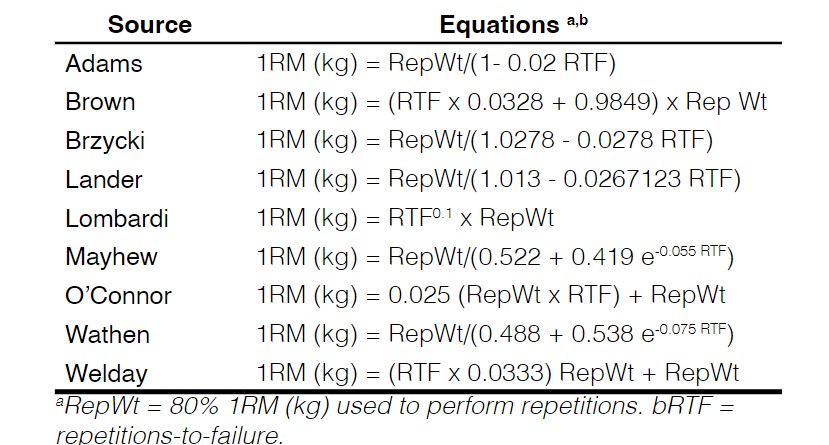
It is often more time-efficient and safer to employ predictive One-Repetition Maximum (1RM) equations rather than conducting an actual 1RM test. Multiple predictive equations are currently available, and a recent notable study undertook an assessment of the accuracy of nine common predictive equations (see image above).
The study encompassed 62 women and 57 men who engaged in a 16-week resistance training program. Preceding and following the program, the participants underwent a 1RM test on a squat, bench press, and arm curl. Additionally, participants were subjected to testing on the maximum number of repetitions achievable for the squat, bench press, and arm curl, at 80% of their 1RM score.
The outcomes of the study were generally encouraging for the application of predictive equations in predicting 1RM for the squat, bench press, and arm curl for both men and women, before and after a resistance training period. Nevertheless, notable findings emerged. For men, the Lombardi equation emerged as the most accurate for predicting 1RM in the squat and bench press, yielding results akin to the actual 1RM in both pre-and post-resistance training. Conversely, for women, the Brown, Brzyski, and Lander equations yielded similar 1RM scores to the actual values for the squat and bench press, but not for the arm curl test.
The researchers advocate for the usefulness of predictive equations in estimating 1RM when a direct measure is not logistically feasible. Nonetheless, they emphasise the substantial variances in the accuracy of the various equations. Therefore, they advise to directly measure 1RM where possible.
From us this week:
>> New course: Energy Balance
>> New podcast: Optimise Training Transfer For Maximal On-Pitch Performance
>> New infographic: Vetting Portable Options For Testing Jump Height
>> New article: Hydrotherapy
Access to a growing library of sports science courses
SFS Academy is an all-access membership to premium sports science education.
With SFS Academy, you’ll learn from some of the best coaches around the world as they teach you how to apply the latest research and practice with your athletes.
The post Big Data In Football! appeared first on Science for Sport.
]]>The post The Greatest Sport You Don’t Know About! appeared first on Science for Sport.
]]>- The All-Ireland Senior Hurling Championship Final
- Is hot water immersion more effective than cold water immersion?
- Eamonn Flanagan’s guidelines on how to effectively taper training
- Is caffeine the only effective ingredient in energy drinks?
The All-Ireland Senior Hurling Championship Final

During the recent weekend in Ireland, the pinnacle of the sporting calendar, “The All-Ireland Senior Hurling Championship,” took place. Hurling, an indigenous sport in Ireland, is recognised as the fastest field sport globally. The final match attracted a crowd of over 82,000 spectators and gained extensive attention on social media platforms in Great Britain, as the BBC televised the event for the first time. First-time viewers were captivated by the remarkable athleticism and entertainment provided by the sport.
The display of exceptional skill in the final has garnered numerous new enthusiasts for Hurling (Check out this incredible piece of skill in the final here). It may come as a surprise to many that the players are amateurs and hold full-time positions outside of their athletic endeavours. For those interested, a comprehensive blog by David Nolan delves into the rigorous demands of the game, citing scientific research.
In the blog, Nolan provides valuable insights into the physical requirements of Hurling players. It is revealed that players typically cover 7.5-9+ kilometres during a game. The intense pace of the game necessitates significant distances covered at high speeds, with players often running 1.5 kilometres at high speeds and sprinting approximately 500 meters in a game.
Nolan’s analysis further outlines the physical attributes of these athletes. For instance, research indicates that players can deadlift approximately 1.85 times their body weight and bench press 1.3 times their body weight. Additionally, the average inter-county player can approximately cover 5 meters in 1.1 seconds, 10 meters in 1.8 seconds, and 20 meters in 3.1 seconds. Addressing aerobic capacity, Nolan examines a study revealing that the mean distance covered in the Yo-Yo Intermittent Recovery Test 2 by 150 players was slightly below 1600 meters, with some players achieving close to 2 kilometres. These findings align Hurling player’s fitness levels with those of elite athletes from other sports.
It was wonderful to see Hurling gaining well-deserved international recognition from an Irish perspective and I highly recommend checking out Nolan’s excellent blog. However, on a personal level, it was agonising to see my home county Cork narrowly defeated by Clare in the final. Knowing the dedication of the Cork backroom staff and the exceptional effort they put into preparing the players to showcase their remarkable skill and athleticism on the day was truly commendable. Nonetheless, congratulations to Clare. Hopefully, this will pave the way for Hurling to receive even more international recognition worldwide.
Is hot water immersion more effective than cold water immersion?

Esteemed academic figure Professor Stephen Patterson has recently shared a series of highly insightful articles on his LinkedIn profile. One such post delves into a recent study comparing hot water immersion to cold water immersion.
Professor Patterson provides a succinct overview of the study’s key findings in this post. The research involved 30 participants who underwent an exercise-induced muscle damage protocol and were subsequently categorised into three groups: a control group, a hot water immersion group, and a cold water immersion group.
The study’s results, obtained after 48 hours, indicated that participants subjected to hot water immersion exhibited significantly greater improvements in rate of force development and reduced muscle soreness, compared to those who underwent cold water immersion. Notably, the temperature utilised for hot water immersion was 41°C.
From these findings, Professor Patterson posits that hot water immersion is more effective in optimising recovery and sustaining explosive strength than cold water immersion. While further research is warranted, the evidence supporting Professor Patterson’s perspective is undeniably promising.
We encourage you to visit Professor Patterson’s LinkedIn profile for a more comprehensive exploration of this research. We have several great podcast episodes available that discuss how professionals have implemented both hot and cold water immersion for enhancing recovery. We invite you to listen and explore whether you lean towards the hot or cold side of the debate, or perhaps you believe in a contrast of both methods!
- Recover Like A Pro With The Latest Science Behind Cooling Techniques
- How To Use Hot & Cold To Optimise Recovery
- How Cold And Heat Exposure Can Fast-Track Your Recovery – And How To Do It Safely
Eamonn Flanagan’s guidelines on how to effectively taper training

In anticipation of the upcoming Olympics, athletes are concluding their training, and their focus is shifting towards tapering their training schedules. A recent post by Eamonn Flanagan on X emphasised the importance of tapering for strength and power events.
Flanagan stressed that the objective of tapering training is to minimise fatigue and optimise competition performance. He outlined several advantages of an effective taper, including a potential 20% increase in strength and power, reduced muscle damage after training, positive effects on the endocrine system, improved sleep quality, and enhanced overall mood.
While emphasising the need for a personalised tapering strategy based on the athlete’s experience, training age, and previous training regimen, Flanagan also offered practical guidelines for planning a taper. The duration of the taper may vary from 7 to 28 days depending on the athlete’s accumulated fatigue. Flanagan recommended reducing training volume by at least 50% while maintaining or slightly decreasing training intensity (10-15% reduction). Consequently, the impact of the tapering strategy largely stems from the reduction in training volume.
Additionally, Flanagan cited a research paper on tapering to support his assertions. If you want to learn more about planning an effective training taper, we highly recommend checking out Flanagan’s post and the research paper he used to support his claims.
Is caffeine the only effective ingredient in energy drinks?

During the recent International Society of Sports Nutrition (ISSN) Conference, a notable study titled “Beyond The Buzz” was presented, generating extensive discussion online. The study scrutinised the efficacy of energy drinks, casting doubts on their effects.
The study enrolled 21 exercise-trained participants who completed a series of tests, including the Profile of Mood States (POMS), handgrip strength, and a maximum push-up test, after consuming an energy drink and a control drink containing 200 mg of caffeine.
The results indicated that the energy drink did not yield significant effects on mood, reaction time, handgrip strength, or muscle endurance compared to the control drink with an equivalent caffeine content. Notably, the energy drink used in the study was “Gorilla Mind”. These findings suggest that the additional ingredients in energy drinks may not exert a significant impact beyond the effects of caffeine.
From us this week:
>> New course: Investigating S&C Practices
>> New podcast: Reclaiming The Soul Of Youth Sport
>> New infographic: Reactive Strength Index
>> New article: German Volume Training
Access to a growing library of sports science courses
SFS Academy is an all-access membership to premium sports science education.
With SFS Academy, you’ll learn from some of the best coaches around the world as they teach you how to apply the latest research and practice with your athletes.
The post The Greatest Sport You Don’t Know About! appeared first on Science for Sport.
]]>The post Relative Energy Deficiency in Sports appeared first on Science for Sport.
]]>- REDs: The impact of overtraining and undereating
- Which type of plates are better for bench press – bumper or iron?
- Eccentric strength training cheat sheet
RED-S: the impact of overtraining and undereating

This week, a recent story feature on CNN Sports that discusses the impact of Relative Energy Deficiency in Sports (RED-S) on athletes Mary Cain and Pippa Woolven has been getting a lot of attention on LinkedIn. Both Cain and Woolven, who had impressive junior careers, were affected by RED-S, which is caused by overtraining and undereating over a prolonged period. RED-S can lead to an increased risk of bone fractures, as well as negatively affecting metabolism, immune health, cardiovascular health, menstrual health, mental health, and athletic performance.
Cain achieved the remarkable feat of becoming the youngest athlete from the United States to make a World Championship team in track and field. However, it is shocking to learn that RED-S played a role in Cain’s five broken bones, a period missed for over three years, constant hunger, and poor mental health. Similarly, Woolven, a champion in the World Junior steeplechase, also had health issues such as missed periods, digestive problems, and deteriorating mental health.
Fortunately, due to the efforts of people like Cain and Woolven, more attention is being given to RED-S. A recent LinkedIn post by Sharon Madigan PhD, sheds further light on the subject. Although the adverse effects of RED-S can mostly be reversed by eating more and training less, athletes with a high training load must fuel their bodies with the right nutrition to prevent it in the first place. The feature on CNN Sports is well worth checking out!
Which type of plates are better for bench press – bumper or iron?
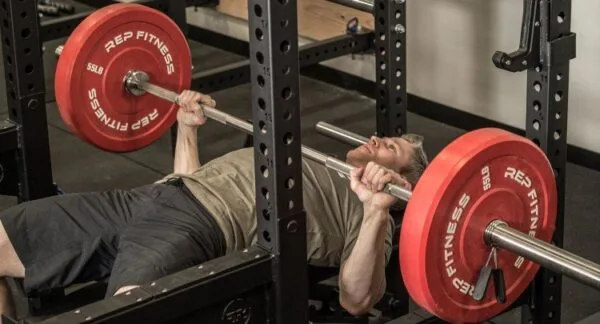
Bumper plates are often preferred over iron (standard) plates for safety. However, some lifters believe that using bumper plates can negatively impact their lifts compared to iron plates. Recently, a fascinating study was published in the Journal of Strength and Conditioning Research that sheds light on this topic.
The study involved 11 participants who were experienced in resistance training. They performed the bench press at 70%, 80%, and 90% of their 1RM. The participants were blinded and were unaware of whether bumper plates or iron plates were on the bar. The participants were video-recorded while performing their lifts, and their muscle activity was monitored through electromyography (EMG) recordings.
According to the study, there was no significant difference between the use of bumper or iron plates for the bench press. This means that both types of weight plates can be used interchangeably without having any biomechanical impact on the lift.
Eccentric strength training cheat sheet

Last week, Eamonn Flanagan shared a valuable resource on eccentric strength training on X. In his post, Flanagan categorizes eccentric training into four types: basic, moderate, submaximal, and maximal, based on the intensity and goals of training.
For each category, Flanagan provides examples and explains who would benefit the most from it. For instance, the moderate eccentric training category is suitable for advanced rehabilitation, injury prevention, and individuals with lower training ages. Some exercises in this category include moderate impact plyometrics, bodyweight eccentrics (adapted Nordic curls and Copenhagen’s), and acceleration and deceleration exercises. The intensity for this category should be around 4-6 out of 10 on the RPE scale.
Flanagan’s eccentric “cheat sheet” is backed by research from Burgos-Jara et al. (2023) and is an essential resource for coaches interested in implementing eccentric strength training with their athletes. It is helpful to determine which category of the continuum the athlete should focus on, the specific eccentric exercises to perform, and the intensity at which to perform them. To see the post, please click on this link.
From us this week:
>> New course: Strength Training For Rowers
>> New podcast: Blood Flow Restriction Rockets Recovery
>> New infographic: How Important Is Muscular Strength To Athletic Performance
>> New article: Skill Acquisition
Access to a growing library of sports science courses
SFS Academy is an all-access membership to premium sports science education.
With SFS Academy, you’ll learn from some of the best coaches around the world as they teach you how to apply the latest research and practice with your athletes.
The post Relative Energy Deficiency in Sports appeared first on Science for Sport.
]]>The post GRUELLING training regime of marathon record holder! appeared first on Science for Sport.
]]>- Kelvin Kiptum’s ferociously gruelling training regime
- Skill acquisition framework for excellence
- The three A’s of strength & conditioning program monitoring
Kelvin Kiptum’s ferociously gruelling training regime
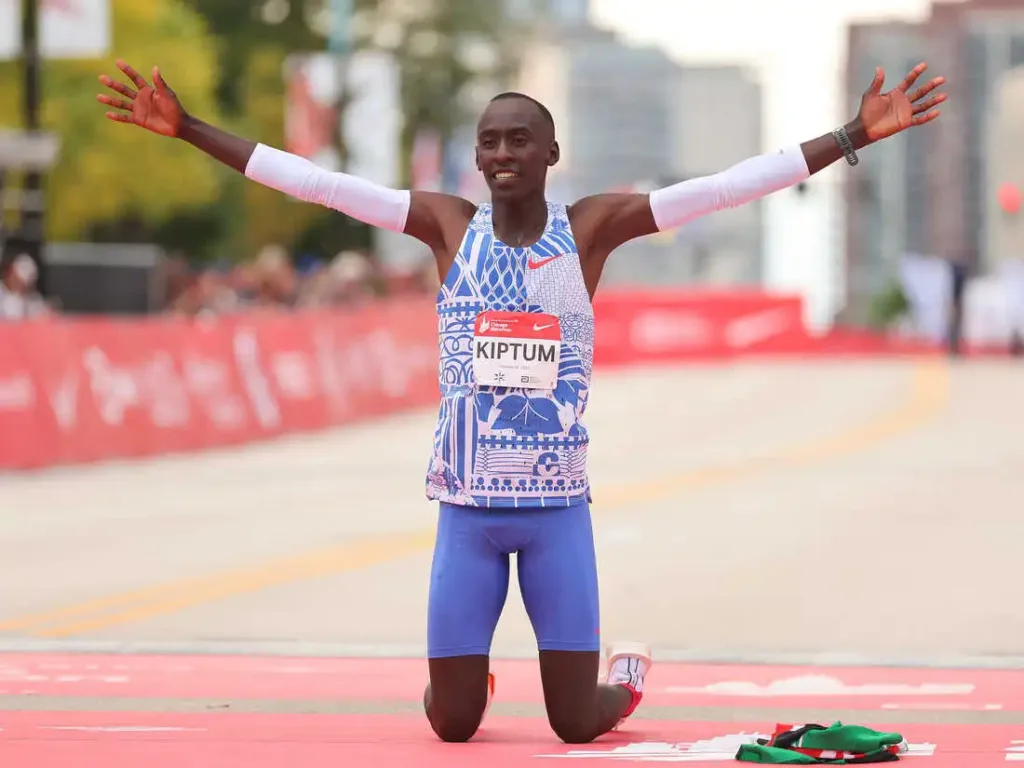
Kelvin Kiptum recently shattered Eliud Kipchoge’s World marathon record by 34 seconds in Chicago. In a recent article Kiptum’s coach, Gervais Hakizimana, revealed what a typical training week looks like. It’s BRUTAL! Kiptum’s average mileage ranges between a scarcely believable 250-300km per week! In fact, he ran over 900km in a three-week period in preparation for the recent London marathon, which he won.
The article details his weekly training program. He completes a morning and afternoon run on Mondays, Wednesdays, and Fridays, totalling 40km. On Tuesdays, he performs a fartlek track training session. On Thursdays and Sundays, he runs close to a marathon distance at a marathon pace. Saturday, he performs a track or road run. Yes, there are NO DAYS OFF! Which we do NOT recommend!
In the second half of the article, his coach solemnly discusses his fears of Kiptum’s longevity due to the crazy workload. It is worth noting that Kiptum trained himself until recently employing the coaching services of Hakizimana. Therefore, a robust coach-athlete relationship may not yet be established. Nevertheless, we should watch in awe of this incredible marathon runner in future races. It will be riveting to see how long he can sustain this ferociously gruelling training regime.
Skill acquisition framework for excellence

Recently, a fascinating paper was released, “Effective Practice and Instruction: A Skill Acquisition Framework for Excellence”. Skill acquisition is a captivating, yet sometimes complex topic. Its significant linkage to sporting skills cannot be disregarded. However, as the paper suggests, much of the skill acquisition knowledge is still not applied in everyday practice. Therefore, the authors of the paper proposed the Skill Acquisition Framework for Excellence (SAFE), hoping to advance skill acquisition in practice.
The SAFE is constructed on five action points.
- Find the right balance in practice between focusing on long-term learning and short-term performance.
- Focus on the quality rather than merely the quantity of practice.
- Create practice conditions that are specific to the competition.
- Consider individual differences in how learners respond to various interventions.
- Facilitate learning during practice rather than dictate or abdicate.
These action points are expertly discussed in detail throughout the paper. In addition to these action points, common myths in skill acquisition are also reviewed.
This paper is well worth checking out. The authors did a fantastic job of reviewing a tricky topic and providing practical application recommendations. After all, who doesn’t want to enhance how our athletes learn in practice? If you are interested in learning more about skill acquisition, why not check out our excellent skill acquisition course (click here).
The three A’s of strength & conditioning program monitoring
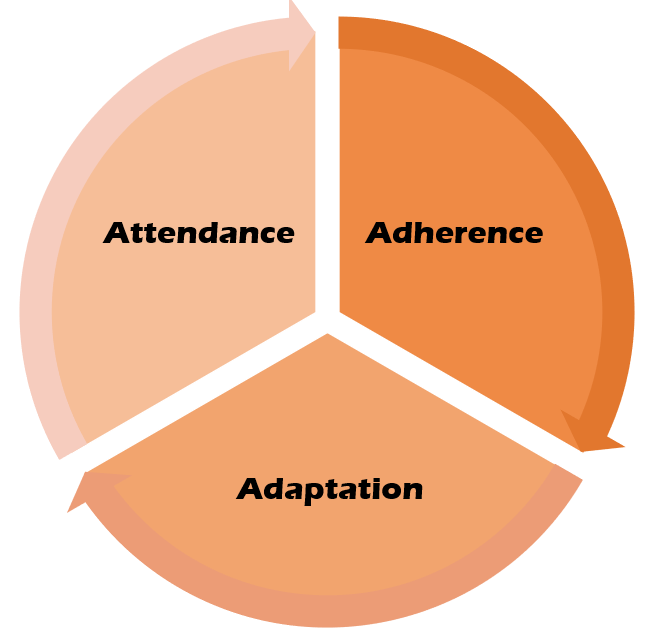
Eamonn Flanagan posted a thought-provoking tweet on X this past week. The tweet discusses the three A’s of strength and conditioning program monitoring: attendance, adherence, and adaptation. Flanagan expresses how S&C coaches repeatedly jump straight into monitoring program adaptation first.
However, in Flanagan’s opinion, it is best to start with the basics. Firstly, is the athlete attending to training and are they actively engaged in the program? Therefore, attendance monitoring is the best place to start. Once attendance has been established, then it is time to monitor adherence. What exactly is the athlete doing during their training sessions? Are they following the program exactly as it is prescribed? Thus, precisely monitoring adherence will provide essential information.
Finally, once attendance and adherence are established and understood, monitoring adaptation should be examined. This tweet is a stylish reminder for S&C coaches to not overlook the basics. Don’t underestimate the importance of attendance and adherence before “digging into the sexy stuff of adaptation” as Flanagan puts it!
From us this week:
>> New course: Relative Age Effect
>> New podcast: How To Train Like A Hyrox World Champion
>> New infographic: Roles And Responsibilities Of An S&C Coach
>> New article: How To Improve The Vertical Jump?
Access to a growing library of sports science courses
SFS Academy is an all-access membership to premium sports science education.
With SFS Academy, you’ll learn from some of the best coaches around the world as they teach you how to apply the latest research and practice with your athletes.
Get instant access when you join today on a 7-day free trial.
I hope you enjoyed this week’s roundup of the hottest sports science news, and as always, we’ll be back next week with more to keep you at the forefront of the industry.
The post GRUELLING training regime of marathon record holder! appeared first on Science for Sport.
]]>The post Velocity-Based Training appeared first on Science for Sport.
]]>- Summary
- What is velocity-based training?
- Why is velocity-based training useful?
- How is velocity-based training used?
- Load-velocity profiling and predicting 1RM
- Minimal velocity thresholds
- Exertion-load profiling
- Provide augmented feedback
- Autoregulation: Training adjustment to optimise loads
- Identifying and targeting specific training qualities
- Conclusion
- References
- About the Author
Summary
Velocity-based training appears to be a valuable tool for strength and conditioning coaches, personal trainers and others alike. The most commonly used technologies appear to be linear position transducers and accelerometers, examples of which are the GymAware device and the PUSH Band, respectively. More recently, a high-precision laser optic device called “FLEX” has also entered the market. Using the data collected from the devices, in certain circumstances, they appear to be a valid and somewhat reliable tool for predicting one-repetition maximum (1RM) using sub-maximal loads.
In addition to this, velocity-based training can be used for many other useful purposes, such as providing instantaneous feedback to athletes to promote performance improvements. However, whilst this training tool appears to have many useful functionalities, coaches should not get distracted by the technology and forget what it is they are actually there to do, which is to coach.

What is velocity-based training?
Velocity-based training is simply a method of training which uses a piece of technology to track the movement speed of the exercise. The concept of velocity-based training is nothing new and can, in fact, be traced back several decades (1-4). It is only due to the development of technology, accessibility of information provided by the internet, and the development of business enterprises taking advantage of a niche within the market that has propelled the concept and application of velocity-based training in recent years.
This explosion of interest has led to some very interesting developments, both in the application and the technology. For example, using linear position transducers and wearable accelerometers, we can accurately calculate barbell velocity, and thus produce an athlete’s load-velocity profile. But before we dive into this complex jargon, we will first explain what velocity-based training is and why it is useful.
So whilst the concept is not new, the common practice of using this method is. This form of training typically uses technology such as linear position transducers (e.g. GymAware device), laser optic devices (e.g. FLEX), and wearable accelerometers (e.g. PUSH Band) to measure movement velocity during an exercise (e.g., back squat). This provides the coach and athlete with information regarding their exercise performance and allows the coach to provide very specific feedback (e.g. “lift the barbell quicker or be more explosive”).
Why is velocity-based training useful?
Velocity-based training allows coaches and athletes to train at very specific intensities. For example, if two completely identical athletes with the same strength levels etc performed an 80% of 1RM back squat, but one only lifted the bar with maximal effort whilst the other did not, would the intensity of the lift be the same? The answer is no. The intensity will be higher for the athlete who tried harder than the other, as it is more physically demanding to lift the bar with maximal effort.
Therefore, VBT enables athletes to train at the appropriate intensity, which ensures that they are training optimally to achieve their desired performance outcomes. To add to this, research has shown that velocity-based training can significantly improve an athlete’s performance.
When strength and conditioning coaches, personal trainers, physiotherapists and other gym-based practitioners alike design resistance training programmes for their athletes and clients, they typically manipulate many training variables such as intensity, volume, rest, frequency, tempo etc. Whilst many of these are very easy to measure, for example, intra-set rest times may be one minute and the athlete may be given a training frequency of three sessions per week, other variables such as intensity are not so simple to calculate.
Intensity is difficult to measure.
Training intensity, for instance, has historically been calculated as a percentage of the athlete’s 1RM. An athlete’s 1RM is often determined by testing their maximal strength before the start of a new programme, and after they have completed it. This allows the practitioner to identify if the athlete has improved their strength throughout the programme – simple right?
This approach, using a percentage of 1RM, is often referred to as either the “traditional” or “percentage-based” approach to calculating training intensity (5). However, this method becomes very problematic when we consider the day-to-day fluctuations in strength, which have been shown to be as large as 18 % above and below the previously tested 1RM, equating to a total variance of 36 % (5-7).
To provide a crude example, strength levels before a rugby match are likely to be very different to those the day after, therefore, prescribed training loads based on a percentage of 1RM need to be continuously adjusted to suit the ‘freshness’ of the athlete. Figure 1 should help visualise the effects of daily fluctuations in strength.

From the hypothetical graph, it is apparent that an athlete’s 1RM can, and does, change on a daily basis. This simply means that an 80 % of 1RM back squat on a Monday may not be equal to 80 % of 1RM back squat on a Tuesday. In an attempt to end this dilemma, modern technology has enabled practitioners to measure movement velocity as a marker of intensity rather than the percentage of 1RM. Say hello to Velocity-Based Training!
There are also several other reasons why this method is useful, but we will discuss these in the next section, so keep reading to find out.
How is velocity-based training used?
As many practitioners have now adopted this form of training, more minds mean more ideas, and as a consequence, there are now many other ways to use velocity-based training (5, 8, 9). Most of these include:
- Load-velocity profiling and predicting 1RM
- Minimal velocity thresholds
- Exertion-load profiling
- Providing augmented feedback
- Autoregulation
- Identifying and targeting specific training qualities
We understand these are some big, elaborate, and to be quite honest, overly complicated words, so what we have done for you is describe them all in simple English – at least as best as we could.
First and foremost, we need to clarify three metrics and why they are used for different exercises:
- Mean concentric velocity – this is simply the average speed during the entire concentric phase of the exercise. This metric is used for typical strength-based exercises such as the back squat, deadlift, bench press, prone pull and others alike. As strength-based exercises consist of acceleration and deceleration phases, the mean concentric velocity metric should be used.
- Peak concentric velocity – this is simply the peak speed during the concentric phase of the exercise and is usually calculated every 5 milliseconds. This metric is used for ballistic/power-based exercises such as the power clean, snatch, bench press throw, and jump squat. As ballistic/power-based movements consist of an acceleration and a trajectory phase, mean concentric velocity would not be appropriate, and therefore peak concentric velocity should be measured instead. Additionally, and perhaps more importantly, during certain power-based movements such as the Power Clean, the first pull phase is often slow, whilst the second pull is explosive and very fast. Using mean concentric velocity would, therefore, skew the data, so in this instance, peak concentric velocity is more appropriate.
- Mean propulsive velocity – It is important to understand what this metric is, and how it differs to mean concentric velocity. According to Gonzalez-Badillo (10), the propulsive phase is defined as the “portion of the concentric phase during which the measured acceleration (a) is greater than the acceleration due to gravity (i.e., a ≥ −9.81 m·s−2).” In other words, the section of the concentric phase which is ≥ − 9.81 m·s−2.
Load-velocity profiling and predicting 1RM
Is predicting 1RM valid and reliable?
As load and velocity have a very close relationship (i.e. when one increases, the other decreases (10-14), it is possible, in certain circumstances, to predict an athlete’s 1RM on various exercises using a statistical method known as “linear regression” (5, 15).
This method of predicting 1RM has been shown to have a reliability of ≥ 95 % for the Smith machine half-squat and both the free-weight and Smith machine bench press with a pause when using the mean propulsive velocity (16, 17). Additionally, the PUSH Band (a velocity-based training device), has also been shown to reliably predict peak velocity and power during the countermovement jump – although they were slightly overestimated (18).
However, other research that used the standard free-weight back squat and bench press, and used mean concentric velocity, reported that velocity measures cannot be used to accurately predict actual 1RM (11, 12). The reasons these findings conflict with earlier research are:
- Velocity is less stable/inconsistent at lighter loads – hence why the heavier the load, the more accurate the 1RM prediction. Therefore, the load-velocity relationship is not perfectly linear. In other words, the lighter the load, the higher the error (17).
- Certain exercises (e.g. free-weight back squat) have a long deceleration phase at the end of the concentric portion (13, 14), therefore, using mean concentric velocity will overestimate movement velocity. This is part of the reason mean propulsive velocity is a better metric to use in this circumstance, as it only measures the ‘accelerative’ phase.
- The inclusion of the stretch-shortening cycle: Exercises that incorporate the stretch-shortening cycle cause an increase in concentric velocity due to the recoiling action of the movement (15). This increase in velocity is likely to cause greater inconsistencies in the concentric velocity measure (i.e. mean concentric velocity or mean propulsive velocity), therefore, influencing the reliability of the 1RM prediction. As such, exercises which use a pause are more likely to produce better 1RM predictions due to a more stable concentric velocity measure.
To clarify, actual 1RMs are most accurately predicted when using heavier loads, Smith machine variations, mean propulsive velocity, and exercises which incorporate a pause to eliminate the stretch-shortening cycle. When a coach is attempting to predict actual 1RM and not using the aforementioned points, the prediction is likely to be inaccurate. Simply meaning, attempting to predict actual 1RM using the standard back squat and bench press exercise with mean concentric velocity is not recommended.
How to predict an athlete’s 1RM
To predict an athlete’s 1RM, the coach must first develop a ‘load-velocity profile’ of the athlete by recording their movement velocities at each load (e.g. 0.8 m/s at 60 % 1RM; Figure 2). A load-velocity profile allows the coach to easily see how fast an athlete can lift a load at a given percentage of their 1RM (e.g. 60 %).
“When the load (i.e. weight) of the exercise increases, the movement velocity decreases.”
If you want to learn more about this relationship, then read our article on the “Force-Velocity Curve”.
Load-velocity profiling is a method which uses a series of repetitions, either with relative or absolute loads, to produce a force-velocity profile for a specific exercise. Figure 2 shows a hypothetical load-velocity profile for an athlete’s bench press performance. Note how when the load/weight goes up, the velocity decreases and vice versa.

It is currently recommended that coaches measure the mean propulsive velocity over at least 4-6 increasing intensities using loads of between 45-95 % of actual, or predicted, 1RM as seen above in Figure 2 (17).
NOTE: the heavier the loads, the greater the prediction accuracy due to the points formerly discussed.
Figure 3 demonstrates how to perform this test with greater detail. Previous research has suggested that the velocity difference between the lightest load (e.g. set 1) and the heaviest load (e.g. set 6) should be at least 0.5 m/s apart (5, 18).
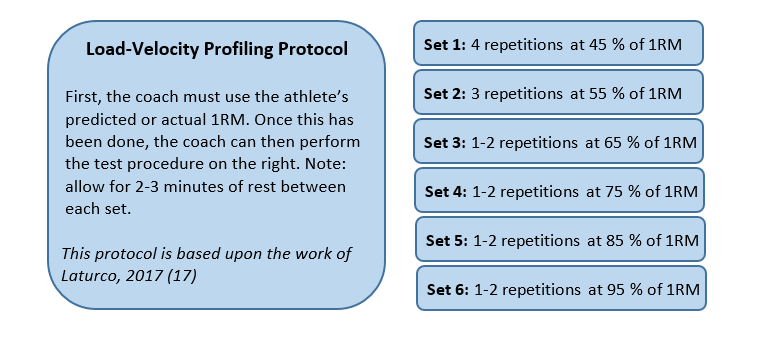
Figure 3 – Load-Velocity Profiling Protocol (based on Laturco, 2017 (17))
When performing a bench press, for example, it is vital that the athlete attempts to move the barbell as quickly as possible during the concentric phase. The highest mean propulsive velocity recorded during each load should then be used to compute the load-velocity profile (17).
With this in mind, the athletes should be encouraged to maintain strict technical form, and it is the coach’s job to ensure this happens. As such, the coach must pay strict attention to technical execution.
Minimal velocity thresholds
Despite the confusing name, minimal velocity thresholds (MVT), otherwise known as 1RM velocities, are actually very simple. MVTs are the average concentric velocity produced during the last successful repetition. For example, the velocity produced during a 1RM, or alternatively, the velocity produced during the last successful repetition during a repetitions-to-failure test (e.g. nine repetition maximum (9RM)).
In other words, it is the average speed during the concentric phase of a 1RM (i.e. average concentric velocity). With this in mind, it is no surprise that they are often referred to as 1RM velocities.
“Example: the MVT is the average speed during the ascent phase of a 1RM back squat.”
It is very important to understand that these MVTs are exercise specific. For example, whilst 1RM velocities of 0.17 m/s have been reported in the bench press, 1RM velocities of 0.52 m/s have been reported during the prone pull (23). Figure 4 displays how the MVTs differ between two common exercises: the bench press and prone pull.
NOTE: the MVTs are highlighted in green and are the two lowest points for each exercise.
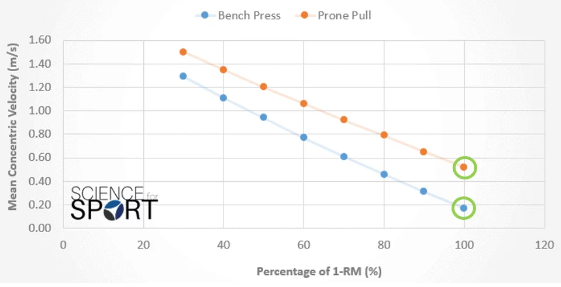
The interesting and arguably most useful piece of information with MVTs is that the MVT is consistent and appears to be same during a maximal 1RM test, or on the last repetition of a sub-maximal repetitions-to-failure test (e.g. 9RM (24)). For example, Izquierdo and his colleagues (24) found that when subjects performed the bench press and squat with repetitions-to-failure using intensities of 60, 65, 70 and 75 % of 1RM, the MVT on the last repetition were always the same. It was also noted that the MVTs for the last repetition of these intensities (60, 65, 70 and 75 % of 1RM) are also the same as the MVT during a maximal 1RM test.
Overall, this suggests that the MVT of a final repetition is the same regardless of whether a sub-maximal repetitions-to-failure test is used (e.g. 9RM), or if a maximal 1RM test is used. This means that the mean concentric velocity during a 1RM test can be calculated using a repetitions-to-failure test. Figure 5 demonstrates how the MVT is the same for both a 1RM and a repetitions-to-failure test. Again, both are highlighted in green.

Tables 1 and 2 show how the MVTs remain relatively similar for a given exercise, but are very different between exercises (bench press vs. back squat). As can be seen in Table 1, the MVTs vary slightly between athletes, with the strongest athletes often being capable of producing the lowest MVTs (bottom half of the table). Perhaps an athlete’s ability to ‘grind out’ a low MVT is due to motivation and exercise experience.
To add to this, it appears that the MVT of an exercise remains the same regardless of whether an athlete gains strength or not (10, 18), but it has not been identified if the same is true when an athlete loses strength. However, what is extremely important to remember, is that whilst MVTs may remain constant across both sub-maximal repetitions-to-failure and maximal 1RM tests, these speeds appear to be different for every exercise and each athlete.
On a practical note, because MVTs appear to be constant between sub-maximal and maximal tests, practitioners can use this information to identify if an athlete is actually attempting a 1RM or not. If the practitioner feels the athlete is not providing a true 1RM effort, perhaps the use of a sub-maximal repetitions-to-failure test would be more appropriate.
Exertion-load profiling
Again, this sounds very complicated, but exertion-load profiling works very similarly to MVTs, and in some way can be seen as a simple extension of them.
By now you should understand that the MVT between a 1RM test and the last repetition of a sub-maximal repetitions-to-failure test are extremely similar, if not the same. Well, what is interesting, is the mean concentric velocity also appears to remain constant for the ‘repetitions in reserve’ (i.e., reps left in the tank) across a spectrum of intensities (60, 65, 70 and 75 % of 1RM) (24). To make this clearer, Table 3 demonstrates how the mean concentric velocity remains constant when an athlete has 𝑥 number of ‘reps left in the tank’.
Remembering that the ‘repetitions in reserve’ simply means how many repetitions an athlete has left in the tank, by looking at Table 3 it becomes obvious that if an athlete has, for example, nine repetitions left in the tank, the mean concentric velocity remains fairly constant, with a deviation (SD) of only 0.02 m/s (highlighted in green).
The same applies if the athlete has five repetitions left in the tank (highlighted in orange). Figure six visually demonstrates the consistency of the mean concentric velocities and the repetitions in reserve.
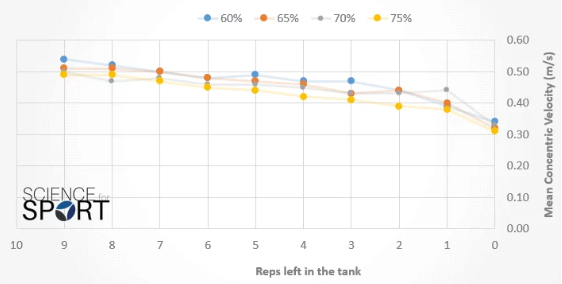
Because of this consistency, a coach can understand how many repetitions the athlete has left in the tank during any given set, provided the athlete is performing the exercise with maximal effort. For example, if an athlete achieves a mean concentric velocity of 0.43 m/s during the squat, the coach can estimate that the athlete may have approximately 3 repetitions left in the tank (Table 3: highlighted in red) – assuming, of course, the athlete is giving it their maximal effort.
It is important to remember that the mean concentric velocity and repetitions in reserve can vary between exercises and athletes, highlighting the importance of building individual profiles for each athlete. So whilst this data provides a reference point, you cannot simply use these velocity profiles, you must measure your own athletes.
Provide augmented feedback
This method of using velocity-based training is very straightforward and has been shown to provide very good improvements in performance (30-32).
Augmented feedback simply refers to using the velocity data to direct coach feedback more accurately and also drive athlete motivation.
In other words, using the data to motivate the athlete and/or provide other useful feedback. For example, if the coach is monitoring an athlete’s jump squat performance and wishes them to ‘explode’ more powerfully out of the bottom position, they may challenge the athlete to beat each of their previous repetition velocities.
This form of augmented feedback may improve athlete motivation and drive greater neuromuscular adaptations. In fact, previous research has shown that instantaneous feedback during loaded jump squats using velocity-based training can significantly enhance jump performance and sprint times (30). Other research has also shown that augmented feedback can increase jump height both in the short term and over a long period of time (31, 32). Figure 7 provides an example of performance improvements seen by using augmented feedback.

Autoregulation: Training adjustment to optimise loads
Autoregulation has previously been defined by as “a form of periodisation that adjusts to the individual athlete’s adaptations on a day-to-day or week-to-week basis” (34).
This method of using velocity-based training is perhaps best described when thinking about the daily fluctuations in strength, as previously discussed. Because strength, and the ‘freshness/readiness’, of an athlete changes on a daily basis (Figure 1 – see above), velocity-based training allows the coach to adjust the training to fit the freshness of the athlete.
For example, if an athlete comes into the gym feeling tired and lethargic and their 1RM is roughly 15kg lower than what it may have been two days ago (Figure 1; Monday vs. Wednesday), then the coach can adjust the training loads in order to match their readiness to train. This ensures coaches get the stimulus, and hopefully adaptation, they were aiming for.
Let’s provide a real-world example: Imagine an athlete walks into the gym and they are programmed to perform the back squat for five sets at 75 % of their 1RM. Well given the fact their 1RM today may be 15 kg lower than it was two days ago when their 1RM was determined, this 75 % load may actually be closer to 85-90 % of their 1RM. This may explain why athletes feel strong on one day, and weaker on others.
To elaborate on this, research has shown that the traditional approach of training to repetition failure does not necessarily lead to greater increases in strength and/or hypertrophy (35, 36); potentially because effort and overall volume-load (load * reps * sets) are reduced due to fatigue. In fact, one study (37) has reported that the traditional approach of training using self-selected repetition velocity was less effective for developing strength when compared to a velocity-based approach, whereby sets were terminated when the repetition velocity dropped below a 20 % threshold; known as a ‘cut-off velocity’.
Cut-off velocities, also known as velocity stop values, are used to terminate/stop a set when the mean concentric velocity of a repetition falls below that value. Experts have suggested using cut-off velocity values of 30 % in the squat, and 35 % in the bench press (28). This means that when an athlete’s repetition velocity drops by more than 30% in the back squat, then the set should be terminated to prevent them from performing unnecessary repetitions and hampering the desired adaptation.
Cut-off velocities, also known as velocity stop values, are used to terminate/stop a set when the mean concentric velocity of a repetition falls below that value.
There are two common ways of using cut-off velocities:
- The cut-off value (e.g. 30 %) is determined based upon the athlete’s first repetition velocity.
- The coach can pre-determine cut-off values based upon the athlete’s load-velocity profile.
Though both of these methods are useful, the first method is perhaps the easiest and most accurate since any pre-determined cut-off values used in the second method can be affected by daily fluctuations in athlete freshness. Not only this, but many velocity-based training devices display the velocity drop-off anyway.
Now without trying to overcomplicate things and overload your brain, you should be able to see how cut-off velocities correspond to the repetitions in reserve, and therefore, allows the coach to prescribed loads and/or terminate sets when an athlete has a set number of ‘reps left in the tank’.
Using Table 4 as an example, if an athlete is performing a set of back squats using 75 % of their 1RM and their mean concentric velocity drops to 0.39 m/s, the coach can determine that the athlete has approximately 2 reps left in the tank (highlighted in orange). Being able to identify how many repetitions an athlete has left in the tank allows the coach to adjust the training load and volume in order to target the desired physical quality.
What is not currently known, is whether there is a set number of reps left in the tank which is the best for gains in muscle mass. It is now well-known that volume load is directly related to increases in muscular hypertrophy (38), and that training to failure is not necessarily the best method of developing muscle mass (36), so it may be a question of which reps in the tank, in combination with volume-load, is optimal for stimulating gains in muscle size.
Reducing the effects of fatigue
The usage of velocity-based training to reduce the effects of fatigue during strength training is relatively straightforward. It is based on the principle that when fatigue develops, velocity slows.
“When fatigue develops, velocity slows.”
Because of this, coaches can estimate metabolic stress and neuromuscular fatigue. Figure 8 shows how velocity slows as fatigue develops. Metabolic fatigue (Figure 8-A; lactate accumulation) increases in a linear fashion, whilst neuromuscular fatigue (Figure 8-B; ammonia) develops in a curvilinear fashion (8).
Based on the limited research, expert opinion suggests that the cut-off velocities of 30 % in the back squat and 35 % in the bench press can be used to limit metabolic stress (28). By doing so, the coach is able to optimise the training stimulus by limiting the hampering effects of fatigue. So for example, if an athlete is performing the back squat at 75 % of their 1RM with an average concentric velocity of 0.5 m/s and the velocity drops by 30 % to 0.35 m/s, then the coach can terminate the set to prevent any desired accumulation of fatigue. Of course, this is assuming the coach does not want the fatigue to develop, and that the athlete is performing each repetition with maximal effort.
If the athlete is lazy, or for any reason does not perform the repetition with maximal effort (i.e. lift the barbell as quickly as possible), then the information might not be accurate. So the coach must watch the athletes, as well as have a level of trust that they are lifting with maximal effort.
Identifying and targeting specific training qualities
The proliferation of velocity based training has led to the understanding and improvement of the force-velocity relationship. Previously the relationship between force and velocity has historically been displayed via the Force-Velocity Curve. However, it is well-known that force and velocity do not always interact in a curvilinear fashion as they are represented in the force-velocity curve.
This has led to the development of the Strength-Velocity Continuum, as displayed below in Table 5, and originally presented as the Strength Continuum by Bosco in 1995 at the Collegiate Strength & Conditioning Coaches Association in Salt Lake City, USA (39). Since its initial presentation, this continuum has been developed with the use of velocity-based training (40).
Table 5 shows that when the load gets heavier, and the percentage of 1RM reaches closer to the athlete’s 1RM, the velocity slows. It also displays the physical qualities being trained when an athlete is training at a particular percentage of their 1RM and the corresponding velocity. The distinguishability of traits on the continuum using the velocity of movement has been one of the major advantages of velocity-based training.
So if the coach wishes to develop an athlete’s “absolute strength” in the back squat, they may prescribe a load which equates 90-100 % of their 1RM, or a maximum velocity of 0.5 m/s or less. Likewise, if they wished to enhance the “speed-strength” quality of the athlete, they may prescribe a load relative to 30-40 % of their 1RM or 1.3-1 m/s.
Whilst this is a very useful guide, and the velocities can be seen as ‘normal/typical’ for those percentages of 1RM, it is important to understand that these speeds, are of course, not completely accurate for every athlete. They may differ for several reasons, such as:
- Strength and power capacity of the athlete
- The exercise being performed (as apparent in Table 4)
- Accuracy of the velocity training device (e.g. accelerometer or linear position transducer)
Having said this, based on the current research and anecdotal evidence presented by industry experts, it appears that the velocities for each zone do not vary a great deal from those numbers presented in Table 4. Understanding these velocity ranges for a variety of different exercises, including the strength and power capabilities of your athletes, allows the coach to identify and target specific training qualities (e.g. absolute strength or strength-speed).
Conclusion
Thanks to recent developments in technology, and some very intelligent individuals within the sports science industry, velocity-based training has evolved strength and conditioning, and potentially for the better. Although this technology may do justice for the industry, it may also do harm if it distracts coaches and subtracts from their session delivery.
There are many ways in which practitioners can incorporate this technology into their coaching structure, but it is strongly advised that coaches do not become over-fixated on this technology and neglect the fundamental aspects of coaching.
Some of these fundamental aspects include: personally watching the technical execution of exercises, verbal feedback, building and maintaining coach-athlete relationships, and the many other ways in which the devices may interfere with the primary role of the practitioner. Providing coaches do not get distracted by the technology, then velocity-based training can add significant value to any coaching programme.
- Fundamentals of Special Strength-Training in Sport: Yuri V. Verkhoshansky: Amazon.com: Books. 2017. Fundamentals of Special Strength-Training in Sport: Yuri V. Verkhoshansky: Amazon.com: Books. [ONLINE] Available at: https://www.amazon.com/Fundamentals-Special-Strength-Training-Sport-Verkhoshansky/dp/B000FFIT26. [Accessed 10 May 2017]
- dynamicfitnessequipment.com. 2017. The Training of the Weightlifter R. A. Roman. [ONLINE] Available at: https://www.dynamicfitnessequipment.com/product-p/sp109.htm. [Accessed 10 May 2017].
- dynamicfitnessequipment.com. 2017. Managing the Training of Weightlifters, N. P. Laputin. [ONLINE] Available at: https://www.dynamicfitnessequipment.com/product-p/sp107.htm. [Accessed 10 May 2017].
- Historic Performance. 2017. Historic Performance Podcast #10 – Dr. Bryan Mann — Historic Performance. [ONLINE] Available at: http://www.historicperformance.net/podcast-episodes//historic-performance-podcast-10-dr-bryan-mann. [Accessed 10 May 2017].
- Jovanovic M, and Flanagan EP. (2014). Researched applications of velocity based strength training. J. Aust. Strength Cond. 22(2)58-69. https://www.researchgate.net/publication/265227430_Researched_Applications_of_Velocity_Based_Strength_Training
- org – The Official Site of the NCAA. 2017. Velocity Based Training | NCAA.org – The Official Site of the NCAA. [ONLINE] Available at: http://www.ncaa.org/health-and-safety/sport-science-institute/velocity-based-training. [Accessed 09 May 2017].
- Zourdos MC, Dolan C, Quiles JM, Klemp A, Jo E, Loenneke JP, Blanco R, Whitehurst M. Efficacy of daily 1RM training in well-trained powerlifters and weightlifters: a case series. Nutr Hosp 2016;33:437-443. https://www.researchgate.net/publication/284179354_Efficacy_of_Daily_1RM_Training_in_Well-Trained_Powerlifters_and_Weightlifters_A_Case_Series
- Flanagan E. (2016) Recent trends & future directions in velocity based strength training. [ONLINE] Available at: https://www.researchgate.net/profile/Eamonn-Flanagan/publication/265227430_Researched_Applications_of_Velocity_Based_Strength_Training/links/543690a60cf2dc341db35e79/Researched-Applications-of-Velocity-Based-Strength-Training.pdf. [Accessed 05 January 2017].
- 2017. Dr Mike Young Advantages of Velocity Based Training – YouTube. [ONLINE] Available at: https://www.youtube.com/watch?v=od3W495fcyg. [Accessed 09 May 2017].
- González-Badillo, J.J., Sánchez-Medina, L. Movement velocity as a measure of loading intensity in resistance training. International Journal of Sports Medicine. 31: 347 – 352. 2010. https://www.ncbi.nlm.nih.gov/pubmed/20180176
- Bosquet, L., Porta-Benache, J., Blais, J. Validity of a commercial linear encoder to estimate bench press 1RM from the force-velocity relationship. Journal of Sport Science and Medicine. 9: 459-463. 2010. https://www.ncbi.nlm.nih.gov/pmc/articles/PMC3761713/
- Banyard, HG, Nosaka, K, and Haff, GG. Reliability and validity of the load–velocity relationship to predict the 1RM back squat. J Strength Cond Res 31(7): 1897–1904, 2017. https://www.ncbi.nlm.nih.gov/labs/articles/27669192/
- Elliott, B.C., Wilson, G.J., & Kerr, G.K. (1989). A biomechanical analysis of the sticking region in the bench press. Medicine and Science in Sports and Exercise, 21, 450-462. https://www.ncbi.nlm.nih.gov/pubmed/2779404
- Wilson GJ, Elliot BC, and Kerr GK. (1989) Bar path and force profile characteristics for maximal and submaximal loads in the bench press. International Journal of Sports Biomechanics, 5, 390-402. https://www.researchgate.net/publication/288193404_Bar_Path_and_Force_Profile_Characteristics_for_Maximal_and_Submaximal_Loads_in_the_Bench_Press
- Turner, A.N. & Jeffreys, I. (2010). The stretch-shortening cycle: proposed mechanisms and methods for enhancement. Journal of Strength and Conditioning Research, 17, 60-67. http://journals.lww.com/nsca-scj/Abstract/2010/08000/The_Stretch_Shortening_Cycle__Proposed_Mechanisms.10.aspx
- Cronin, J.B., McNair, P.J. and Marshall, R.N. Force-velocity analysis of strength-training techniques and load: implications for training strategy and research. Journal of Strength and Conditioning Research. 17: 148-155. 2003. https://www.ncbi.nlm.nih.gov/pubmed/12580670
- Jidovtseff, B., Harris, N.K.., Crielaard, J.M., Cronin, J.B. Using the load-velocity relationship for 1RM prediction. Journal of Strength and Conditioning Research. 25: 267-270. 2011. https://www.ncbi.nlm.nih.gov/pubmed/19966589
- Sanchez-Medina, L., Perez, C.E., Gonzalez-Badillo, J.J. Importance of the propulsive phase in strength assessment. International Journal of Sports Medicine. 31: 123 – 129. 2010. https://www.ncbi.nlm.nih.gov/pubmed/20222005
- Picerno et al. (2016) 1RM prediction: a novel methodology based on the force–velocity and load–velocity relationships. Eur J Appl Physiol. https://www.ncbi.nlm.nih.gov/pubmed/27577950
- Loturco, I, Pereira, LA, Cal Abad, CC, Gil, S, Kitamura, K, Kobal, R, and Nakamura, FY. Using the bar-velocity to predict the maximum dynamic strength in the half-squat exercise. Int J Sports Physiol Perform 11: 697–700, 2016. https://www.ncbi.nlm.nih.gov/pubmed/26457921
- Loturco, I, Kobal, R, Moraes, JE, Kitamura, K, Cal Abad, CC, Pereira, LA, and Nakamura, FY. Predicting the maximum dynamic strength in bench press: the high precision of the bar velocity approach. J Strength Cond Res 31(4): 1127– 1131, 2017. https://www.researchgate.net/publication/308415612_Predicting_The_Maximum_Dynamic_Strength_In_Bench-Press_The_High-Precision_Of_The_Bar-Velocity_Approach
- Ripley N & McMahon JJ. Validity and Reliability of the PUSH Wearable Device to Measure Velocity and Power During Loaded Countermovement Jumps. NSCA Conference Presentation, July 2016. https://www.researchgate.net/publication/305709753_Validity_and_Reliability_of_the_PUSH_Wearable_Device_to_Measure_Velocity_and_Power_During_Loaded_Countermovement_Jumps
- Sánchez-Medina L, González-Badillo JJ, Pérez CE , Pallarés JG. (2013) Velocity- and Power-Load Relationships of the Bench Pull vs. Bench Press Exercises. Int J Sports Med 2014; 35: 209–216. https://www.ncbi.nlm.nih.gov/pubmed/23900903
- Izquierdo M., Gonzalez-Badillo J.J., Häkkinen K., Ibañez J., Kraemer W.J., Altadill A., Eslava J., Gorostiaga E.M. Effect of loading on unintentional lifting velocity declines during single sets of repetitions to failure during upper and lower extremity muscle actions. International Journal of Sports Medicine. 27: 718–724. 2006. https://www.ncbi.nlm.nih.gov/pubmed/16944400
- Pallares et al. Imposing a pause between the eccentric and concentric phases increases the reliability of isoinertial strength assessments. Journal of Sport Sciences. 32:1165-1175. 2014. https://www.ncbi.nlm.nih.gov/pubmed/24575723
- Ormsbee MJ, Carzoli J, Klemp A and Panton LB. Efficacy Of The Repetitions In Reserve-Based Rating Of Perceived Exertion For The Bench Press In Experienced And Novice Benchers. The Journal of Strength and Conditioning Research. Ahead of Print. https://www.researchgate.net/publication/315195335_Efficacy_Of_The_Repetitions_In_Reserve-Based_Rating_Of_Perceived_Exertion_For_The_Bench_Press_In_Experienced_And_Novice_Benchers
- Helms et al. RPE and Velocity Relationships for the Back Squat, Bench Press, and Deadlift in Powerlifters. Journal of Strength and Conditioning Research. 31(2): 292-297. 2017. https://www.ncbi.nlm.nih.gov/pubmed/27243918
- PUSH // Train With Purpose. 2017. Free VBT Guide by Dan Baker // PUSH // Train With Purpose. [ONLINE] Available at: https://www.trainwithpush.com/3-part-vbt-guide/. [Accessed 10 May 2017].
- Zourdos et al. Novel resistance training-specific RPE scale measuring repetitions in reserve. Journal of Strength and Conditioning Research. 30(2): 267–275 2016. https://www.ncbi.nlm.nih.gov/pubmed/26049792
- Randell, AD, Cronin, JB, Keogh, JWL,Gill, ND, and Pedersen, MC. Effect of instantaneous performance feedback during 6 weeks of velocity-based resistance training on sport-specific performance tests. J Strength Cond Res 25(1): 87–93, 2011. https://www.ncbi.nlm.nih.gov/pubmed/21157389
- Keller M, Lauber B, Gottschalk M & Taube W. Enhanced jump performance when providing augmented feedback compared to an external or internal focus of attention. J Sports Sci. 2015;33(10):1067-75. https://www.ncbi.nlm.nih.gov/pubmed/25529245
- Keller, M., Lauber, B., Gehring, D., Leukel, C., & Taube, W. (2014). Jump performance and augmented feedback: Immediate benefits and long-term training effects. Human Movement Science, 36, 177–189. https://www.ncbi.nlm.nih.gov/pubmed/24875045
- PUSH // Train With Purpose. 2017. An Intro to Velocity Based Training // PUSH // Train With Purpose. [ONLINE] Available at: https://www.nsca.com/contentassets/7fc346ec744044b6871541e5a6ee5c63/velocity_based_training__from_theory_to.99257.pdf?srsltid=AfmBOooFORGxfCQ4R1of2R361PiHb8CuHo-gQfTGFgTSth4MftyzL3CP. [Accessed 04 June 2017].
- Mann JB, Thyfault JP, Ivey PA, Sayers SP. The effect of auto-regulatory progressive resistance exercise vs. linear periodization on strength improvement in college athletes. Journal of Strength and Conditioning Research. 24(7): 1718-23. 2010. https://www.ncbi.nlm.nih.gov/pubmed/20543732
- Folland, JP, Irish, CS, Roberts, JC, Tarr, JE and Jones, DA. Fatigue is not a necessary stimulus for strength gains during resistance training. Br J Sports Med 36: 370-74, 2002. https://www.ncbi.nlm.nih.gov/pmc/articles/PMC1724546/
- Angleri V, Ugrinowitsch C, Libardi CA. Crescent pyramid and drop-set systems do not promote greater strength gains, muscle hypertrophy, and changes on muscle architecture compared with traditional resistance training in well-trained men. European Journal of Applied Physiology, pp 1–11. (2017). https://www.ncbi.nlm.nih.gov/pubmed/28130627
- Padulo, J, Mignogna, P, Mignardi, S, Tonni, F and D’Ottavio, S. Effect of different pushing speeds on bench press. Int J Sports Med 33: 376-80, 2012. https://www.ncbi.nlm.nih.gov/pubmed/22318559
- Schoenfeld BJ, Ogborn D, Krieger JW. Dose-response relationship between weekly resistance training volume and increases in muscle mass: A systematic review and meta-analysis. J Sports Sci. 2017 Jun;35(11):1073-1082. https://www.ncbi.nlm.nih.gov/pubmed/27433992
- Morris B. Presented at Collegiate Strength & Conditioning Coaches Association, Salt Lake City, UT, 2005.
- DEVELOPING EXPLOSIVE ATHLETES: USE OF VELOCITY BASED TRAINING IN TRAINING ATHLETES: Bryan Mann: 9781540558824: Amazon.com: Books. 2017. DEVELOPING EXPLOSIVE ATHLETES: USE OF VELOCITY BASED TRAINING IN TRAINING ATHLETES: Bryan Mann: 9781540558824: Amazon.com: Books. [ONLINE] Available at: https://www.amazon.com/DEVELOPING-EXPLOSIVE-ATHLETES-VELOCITY-TRAINING/dp/1540558827. [Accessed 10 May 2017].
- Sánchez-Medina L, González-Badillo, Pérez CE & Pallarés JG. Velocity- and Power-Load Relationships of the Bench Pull vs. Bench Press Exercises. Int J Sports Med 2014; 35: 209–216. https://www.ncbi.nlm.nih.gov/pubmed/23900903
- Sanchez-Medina, L., and J. J. Gonzalez-Badillo. Velocity Loss as an Indicator of Neuromuscular Fatigue during Resistance Training. Med. Sci. Sports Exerc. Vol. 43, No. 9, pp. 1725-1734. 2011. https://www.ncbi.nlm.nih.gov/pubmed/21311352
The post Velocity-Based Training appeared first on Science for Sport.
]]>





